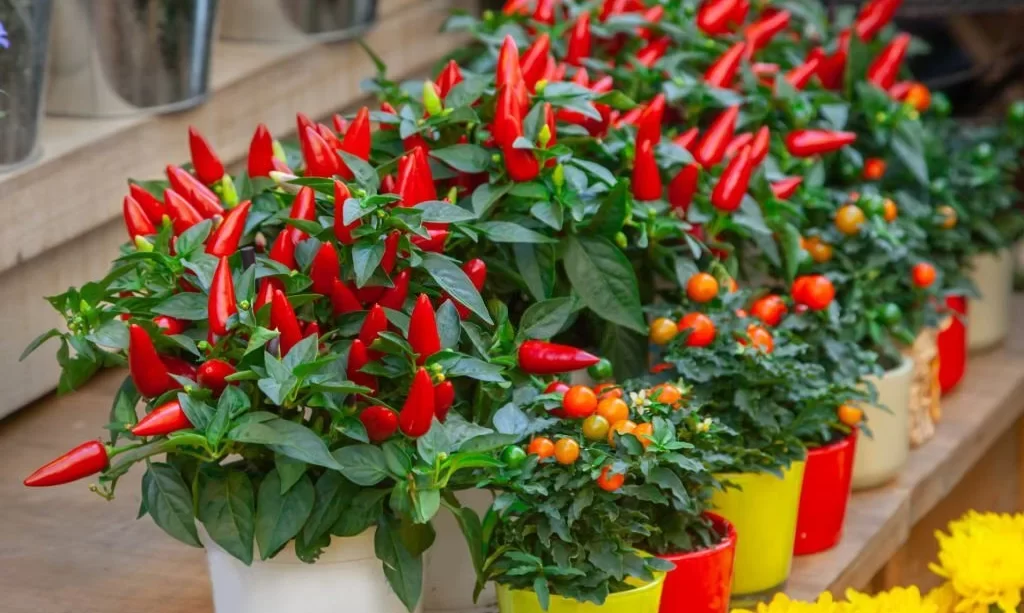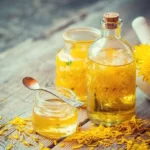Ornamental peppers, with their dazzling array of colors and striking appearance, have become a sought-after addition to gardens, patios, and indoor decor. These miniature marvels are known for their ability to add a burst of vibrancy to any space. However, as their popularity continues to grow, questions arise about whether these eye-catching peppers are not only beautiful but also edible. In this article, we embark on a journey to unravel the truth about ornamental peppers. Are they safe for consumption, or are they purely meant for visual pleasure? To begin our exploration, let’s first understand what ornamental peppers are and why they have become such beloved fixtures in the world of horticulture.
- Ornamental pepper care is easy, and you can expect fruit from mid spring until fall.
- The fruit comes in shades of red, purple, yellow, orange, black or white, and the peppers change colors as they ripen, so you may see several different colors on the same plant.
- Growing ornamental peppers in containers lets you enjoy the colorful fruit up close. Keep the potting soil evenly moist and use a liquid houseplant fertilizer or a slow-release houseplant fertilizer as directed.
- Ornamental peppers need full sun to provide the energy for producing flowers and colorful fruit.
What Are Ornamental Peppers?
Ornamental peppers, scientifically known as Capsicum annuum, are a diverse group of pepper plants cultivated primarily for their visual appeal rather than their culinary use. These captivating plants come in a dazzling array of colors, including vibrant reds, oranges, yellows, and purples. What sets ornamental peppers apart is their striking fruit, which often transitions through a spectrum of colors as it matures. These peppers can be petite or miniaturized versions of their larger, edible counterparts, making them ideal for decorative purposes.
While ornamental peppers belong to the same botanical species as edible peppers, such as bell peppers and chili peppers, they differ significantly in their intended use. Ornamental peppers are not cultivated for their flavor, heat, or culinary qualities. Instead, they serve as ornate additions to gardens, container plantings, and indoor spaces. Their visual appeal makes them a popular choice for adding a touch of artistic flair to both landscapes and home decor.
As we delve deeper into the world of ornamental peppers, it’s essential to recognize that their allure lies primarily in their stunning appearance. However, their visual impact raises a common question: Can these peppers be safely consumed? To answer this question, we’ll explore the unique characteristics of ornamental peppers and how they differ from their edible counterparts in the subsequent sections of this article.
The Confusion: Edible vs. Ornamental Peppers
The world of peppers can be confusing, with ornamental and edible varieties often sharing similar appearances. This visual resemblance can lead to the misconception that ornamental peppers are edible. However, it’s essential to clarify that ornamental peppers and their edible counterparts serve different purposes.
Ornamental peppers are primarily grown for their aesthetic qualities. They are carefully cultivated to produce vividly colored fruit that remains visually appealing for an extended period. These peppers are not intended for consumption and are often unsuitable for culinary use due to their flavor, heat level, or other characteristics.
This confusion between ornamental and edible peppers stems from their shared botanical classification as Capsicum annuum, which encompasses a wide range of pepper varieties. While ornamental peppers belong to this species, they are selectively bred for their appearance rather than taste.
- Ornamental pepper care is easy, and you can expect fruit from mid spring until fall.
- The fruit comes in shades of red, purple, yellow, orange, black or white, and the peppers change colors as they ripen, so you may see several different colors on the same plant.
- Growing ornamental peppers in containers lets you enjoy the colorful fruit up close. Keep the potting soil evenly moist and use a liquid houseplant fertilizer or a slow-release houseplant fertilizer as directed.
- Ornamental peppers need full sun to provide the energy for producing flowers and colorful fruit.
Are Ornamental Peppers Safe to Eat?
One common question that arises regarding ornamental peppers is whether they are safe for consumption. In general, ornamental peppers are not toxic to humans. However, their safety for consumption is not guaranteed, primarily because they are not cultivated for culinary purposes.
While ornamental peppers may not contain toxins harmful to humans, they often have a strong, unpleasant taste that makes them unappealing for eating. The compounds responsible for their unpalatability can lead to digestive discomfort if consumed in significant quantities.
For these reasons, it is strongly advised not to consume ornamental peppers. They are best appreciated for their visual appeal rather than their culinary potential. If you have doubts about the safety of consuming a particular pepper variety, it’s best to err on the side of caution and refrain from eating them.
Key Differences Between Edible and Ornamental Peppers
To differentiate between edible and ornamental peppers, several key distinctions should be considered:
- Culinary Suitability: Edible peppers are grown specifically for their taste and culinary applications, while ornamental peppers are bred for their visual appeal and are typically unpalatable.
- Flavor: Edible peppers come in various flavors, ranging from sweet to spicy, while ornamental peppers often have a bitter or unpleasant taste.
- Heat Level: Edible peppers vary in their heat intensity, with some being mild and others extremely spicy. Ornamental peppers generally lack the heat associated with many edible pepper varieties.
- Use: Edible peppers are used in cooking, seasoning, and food preparation. Ornamental peppers are primarily used for decorative purposes in gardens, landscaping, and indoor displays.
Understanding these distinctions is essential for ensuring that ornamental peppers are not mistakenly used in cooking or consumed, as doing so can lead to an unpleasant culinary experience. While ornamental peppers can add a pop of color to your surroundings, they are best admired for their visual appeal rather than their taste.
Potential Risks of Eating Ornamental Peppers
Consuming ornamental peppers can carry some potential risks, primarily due to their unpalatable nature and lack of suitability for culinary use:
- Unpleasant Taste: One of the primary risks of eating ornamental peppers is their bitter, unappetizing taste. Their flavor can be so intense that it may lead to a highly unpleasant eating experience.
- Digestive Discomfort: While ornamental peppers are not inherently toxic to humans, their consumption in large quantities can result in digestive discomfort. This discomfort may manifest as nausea, stomach cramps, or gastrointestinal upset.
- Confusion with Edible Varieties: There is a risk of mistakenly consuming ornamental peppers, thinking they are edible, due to their visual resemblance to edible pepper varieties. This can result in an unexpected and undesirable taste experience.
To mitigate these risks, it is strongly recommended not to eat ornamental peppers intentionally. Instead, appreciate their beauty in gardens, patios, or indoor displays, and reserve culinary endeavors for specifically cultivated edible pepper varieties.
When and How to Use Ornamental Peppers
While ornamental peppers are not suitable for consumption, there are creative and non-culinary ways to appreciate their visual appeal:
- Decorative Garnishes: Use ornamental peppers as decorative garnishes for dishes or platters when serving food. They can add a vibrant touch to your culinary presentations.
- Dried Arrangements: Consider drying ornamental peppers to create unique and long-lasting decorative arrangements. Their bright colors and distinctive shapes make them excellent candidates for dried flower displays.
- Indoor Decor: Use potted ornamental pepper plants as eye-catching decor items indoors. Their colorful fruit and lush foliage can brighten up your living space.
- Seasonal Displays: Incorporate ornamental peppers into seasonal displays, such as autumn centerpieces or holiday decorations. They can add a festive and artistic touch to your home decor.
By finding creative ways to incorporate ornamental peppers into non-culinary settings, you can fully appreciate their aesthetic qualities without the need to consume them.
Conclusion
In conclusion, ornamental peppers are a delightful addition to gardens and indoor spaces, celebrated for their stunning array of colors and striking appearance. However, it is essential to recognize that these peppers are not intended for culinary use. While they are not inherently toxic to humans, their strong and often unpalatable taste, coupled with the risk of digestive discomfort, makes them unsuitable for consumption.
To fully enjoy ornamental peppers, it is best to appreciate them for their visual appeal and artistic qualities. Whether used as decorative garnishes, dried arrangements, indoor decor, or in seasonal displays, ornamental peppers can add a vibrant and artistic touch to various aspects of your life.
Ultimately, the beauty of ornamental peppers lies in their ability to brighten your surroundings, and they should be admired for their aesthetic qualities rather than their taste. When it comes to peppers in your culinary endeavors, it is advisable to turn to specifically cultivated edible pepper varieties to satisfy your palate.




